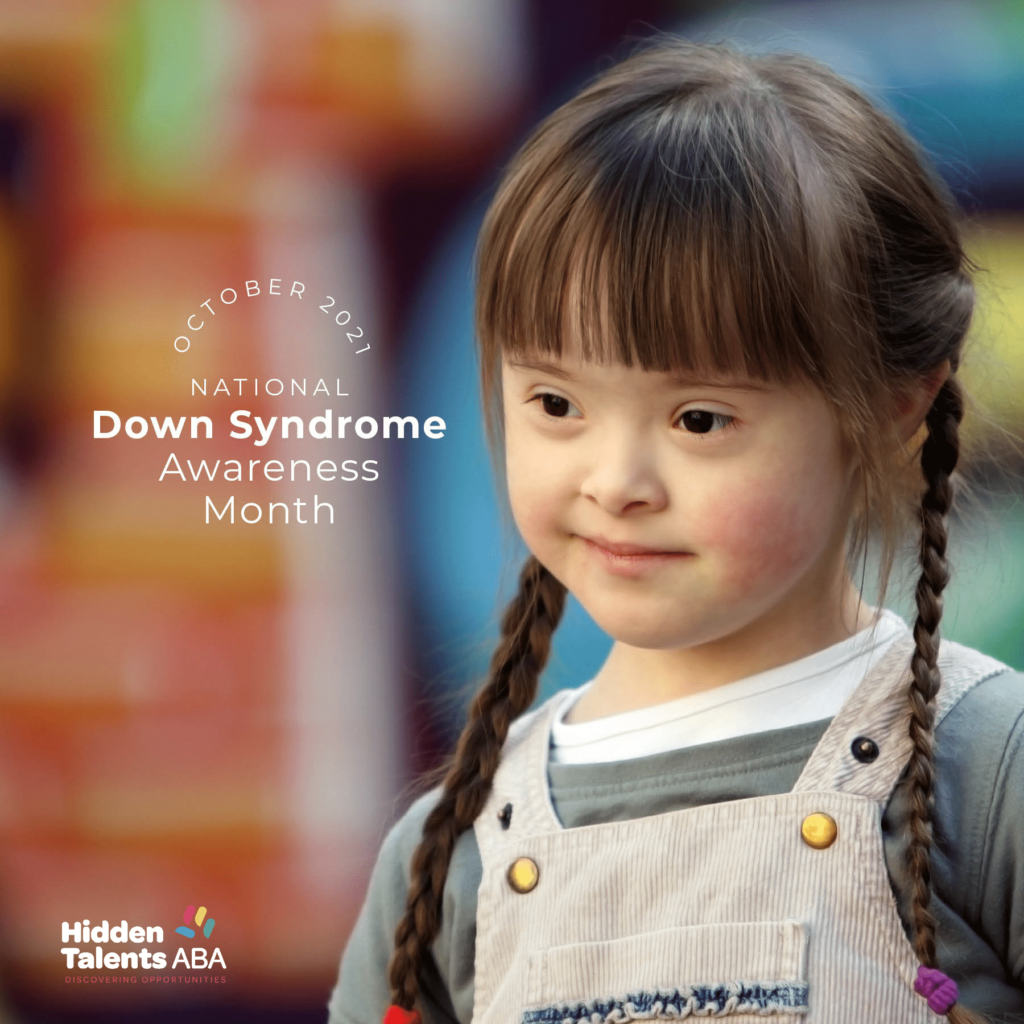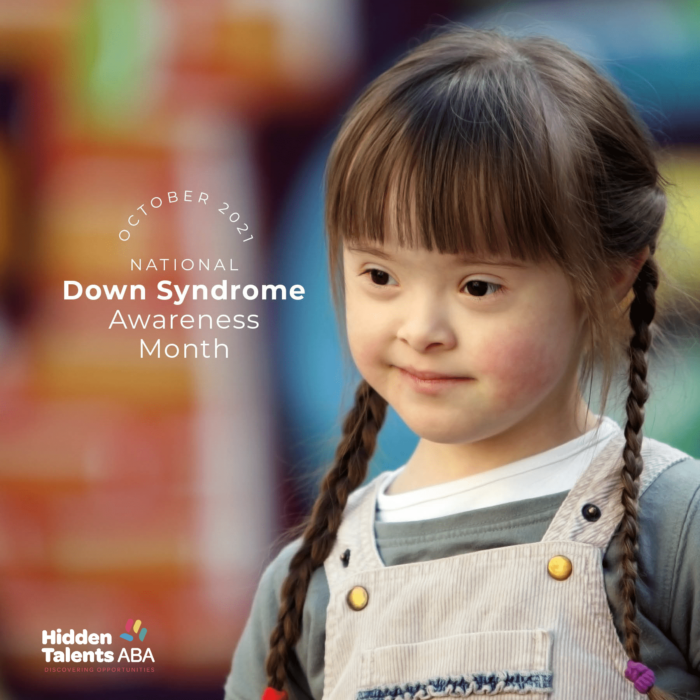This October we are recognizing Down Syndrome Awareness Month to raise awareness and to advocate for the acceptance and inclusion of people with Down Syndrome.


This October we are recognizing Down Syndrome Awareness Month to raise awareness and to advocate for the acceptance and inclusion of people with Down Syndrome.




Although there’s no cure for autism spectrum disorder, a range of therapies can help reduce the most common symptoms associated with the condition. However, early diagnosis and interventions are crucial for achieving long-term positive effects on skill development. Continue reading to find out what types of early autism solutions are available and how they can help autistic children reach their full potential.
Most therapies for children diagnosed with autism spectrum disorder are based on either a behavioral or developmental approach. The two approaches are often combined and used in speech, occupational, physical, and social development therapies, depending on the child’s individual needs.
Behavior therapies, generally referred to as applied behavior analysis (ABA) therapies, are used to help children with autism learn new skills, reinforce positive behaviors, and reduce unwanted ones.
Techniques typically used in behavioral therapies include:
Developmental therapies help promote social interactions by teaching the necessary social, communication, and daily living skills.
Examples of developmental therapies include:
Certain therapies for autism combine elements of behavioral and developmental approaches. These therapies are often shown to be the most effective ones. For example, behavioral therapy may show better results if it also includes elements of developmental therapies that focus on learning skills.
Combined therapies include:
Therapy-based supports for autistic children target specific difficulties when it comes to development or communication skills. They are often used together with, or as part of, other therapies and include:
Below, we focus on the benefits of ABA therapy for children with autism.
Applied behavior analysis (ABA) is the most popular therapy for autism offered in early childhood. It focuses on changing unwanted behaviors while reinforcing desirable ones through positive reinforcement in the form of rewards and other incentives.
ABA therapy can help your child with autism build and strengthen social and communication skills, such as:
Read on to find out more about the different types of early intervention therapies.
Early interventions take place at or before preschool age. An early intervention therapy can be used already at the age of 2 or 3, as soon as your child is diagnosed with autism spectrum disorder. At this age, your child’s brain is still forming, which increases the chances of treatments being effective in the long run.
There are several different types of early intervention therapies that can help your child gain the basic physical, cognitive, communication, and emotional skills that they would typically learn in the first years of life. These therapies include:
Autistic children often benefit from a combination of these therapies. In addition, they often need different therapies or therapy combinations at various stages of their development.
We’ve seen that there are many effective treatments that can help reduce autism symptoms, but you may be wondering whether early treatment increases the chances that your child will outgrow autism.
Autism spectrum disorder is typically considered a lifelong condition, although research shows that some children can outgrow a diagnosis. However, children who are likely to see radical improvement are those with normal or above normal IQ and mild autism symptoms that don’t include issues such as seizures, speech delays, learning disabilities, or severe anxiety.
And that’s not all. Results can only be achieved with rigorous long-term therapy. For example, ABA-based early intervention requires up to 40 hours of treatment per week for several years before you can see a significant improvement.
It is also important to keep in mind that even high functioning children who appear to outgrow autism often continue to struggle with sensory issues, communication difficulties, and other challenges.
Medication can’t cure autism, but it can effectively treat symptoms that autistic children may experience, for example:
Medications that are used to treat these symptoms include:
Medications for treating symptoms of autism are most effective when combined with behavioral or developmental therapies.
Applied Behavior Analysis (ABA) is a widely recognized therapy for children with Autism Spectrum Disorder (ASD). It involves understanding how behavior works, how it is affected by the environment, and how learning takes place.
Early intervention using ABA therapy has been found to be particularly effective. Many studies have shown that early intervention can greatly increase the effectiveness of the treatment.
ABA therapy programs aim to increase language and communication skills, improve attention, focus, social skills, memory, and academics while decreasing problem behaviors. Several studies have also shown that early immersion in ABA therapy leads to improved language and communication skills.
Pediatric ABA therapy is an early intervention program designed to help young children who experience delays in pivotal developmental skills. Individualized behavioral and educational treatment plans are provided to children with ASD, and services can be offered in the child’s natural environment.
The importance of early intervention in autism is well-documented. With hundreds of peer-reviewed studies, ABA has become the standard of care for early intervention treatment of ASD. Ivar Lovaas, a pioneer in developing ABA therapy, proved that early intervention and intensive behavioral therapy enabled children with autism to achieve success.
In conclusion, ABA therapy is considered a leading approach in treating children with autism, especially when initiated early. It provides personalized, high-quality, and effective treatment to meet each child’s unique needs.

Autism is a developmental disability. It’s characterized by relationship, social, communication, and behavioral challenges. The disorder is a spectrum condition, meaning it affects you differently and with varying degrees. Autism spectrum disorder appears during early childhood and does not fall in the medical conditions category.
There is nothing significant that sets you apart from the rest if you’re autistic. The only difference is that you learn, think and solve problems differently. Let’s start by understanding bipolar disorder to know how it compares to autism.
Autism, or Autism Spectrum Disorder (ASD), is a neurodevelopmental condition that affects social interaction, communication, interests, and behavior. It’s known as a “spectrum” disorder because people with autism can have a range of symptoms, with varying degrees of severity.
Symptoms of autism often appear by age two. These may include difficulty with social interactions and communication, repetitive behaviors, strong focus on particular interests, and sensitivity to sensory input1. However, every individual with autism is unique, and the manifestation of these symptoms can vary greatly from person to person.
There are several key areas where individuals with autism may struggle:
The exact cause of autism is unknown, but it’s believed to involve a combination of genetic and environmental factors. There’s no cure for autism, but early intervention using behavioral, educational, and family therapies can help children develop skills and achieve their potential.
Bipolar disorder is a mental health condition that causes regular mood swings. The mood disorder swings from either high (mania or hypomania) or low (depression). It’s known to affect your energy, sleep, thinking, behavior, and other day-to-day tasks. Here are the three common types of bipolar disorders:
You know you have this variant when you start experiencing manic episodes that last for at least one week. Sometimes, the episodes become so severe that you need emergency medical care. You may also experience depressive episodes that last for two weeks. Bipolar I disorder is characterized by:
In more severe cases, you may experience psychosis involving delusions and hallucinations.
Unlike bipolar I disorder, bipolar II disorder is characterized by depressive episodes. However, the episodes are not as extreme as those in bipolar I. Symptoms of bipolar II include:
Manic and depressive behavior episodes characterize this bipolar variant. However, it’s less intense than the other two types mentioned above. The behaviors can last up to two years in adults and one year in children.
Note that you can escalate bipolar episodes if you misuse drugs and alcohol. As a result, you may suffer from a condition known as “dual diagnosis.” Dual diagnosis requires a specialist to tackle both problems.
Next, let’s look at how bipolar disorder and autism relate to each other.
Bipolar disorder may manifest in people with autism during early childhood development. According to a 2008 study, 27 percent of people with autism show bipolar symptoms too. Scientists also suggest that 4% of the general population with bipolar disorder may be over-diagnosed. This is because it’s hard for people with autism to relate feelings properly.
The probability of developing both conditions is not yet clear. It’s also unclear what factors or triggers lead to high chances of suffering from autism or bipolar disorders.
But in some cases, these conditions are genetic. So if you have a close family member with autism, you have a higher chance of developing it. The same applies to bipolar disorder or depression.
Some experts say that autism and bipolar disorder activate specific genes in astrocytes. Astrocytes are star-shaped brain cells that are important components of the central nervous system (CNS). Sometimes, it’s hard to differentiate between autism and bipolar disorder because their symptoms are similar.
Read on to find out how their symptoms overlap each other.
Studies show that a huge percentage of individuals with bipolar disorder are misdiagnosed with autism and vice versa. This is because the two conditions share similar symptoms. Therefore, it can be hard for doctors to tell the difference.
To establish whether you have autism, bipolar, or a combination of both conditions, the psychiatrist assesses how often the symptoms occur. They also assess how long the symptoms occur and the severity.
For instance, it’s normal for you to talk too much or lose focus easily if you have autism. But when you suddenly start experiencing high energy episodes, acting inappropriately, and going for days without sleep, you likely have bipolar I disorder.
Research by the National Library of Medicine suggests that young adults diagnosed with both bipolar disorder and autism have higher chances of:
Due to the overlapping symptoms in both conditions, a doctor may mistakenly diagnose you with autism instead of bipolar disorder, and vice versa. Below are some of the similarities in behavioral differences of the two conditions:
Psychiatrists may find it hard to diagnose mental health problems in autistic individuals. This is especially true if they have significant levels of impaired communication and intellectual abilities. Currently, there is no treatment for autism. However, there are bipolar treatments that have proven to be a success in the past.
If you’re suffering from both conditions, you should be careful when taking mood stabilizing medications. This is because they react differently with different individuals. For example, antidepressants may worsen bipolar disorder symptoms.
Recent advances in the treatment of Autism Spectrum Disorder (ASD) and bipolar disorder suggest promising developments.
For ASD, researchers have found potential treatments. One study suggests that an epilepsy drug could potentially ‘switch off’ autism. The medicine, priced at $3, is believed to be the first possible cure for autism spectrum disorder symptoms. Another study identified a potential new treatment method for Fragile X Syndrome (FXS), which is a leading cause of autism spectrum disorders. Furthermore, a neuroscience study revealed that a drug blocking sodium channels managed to curb autism-associated behaviors such as hyperactivity in mice. In another study, lamotrigine, a medication used to treat epilepsy and bipolar disorder symptoms, reversed autism-like behaviors in mice.
In terms of bipolar disorder, recent research has shed new light on the genetic architecture of this psychiatric condition. This research could potentially lead to more targeted and effective treatments. Moreover, a review focused on the clinical presentation of mood episodes in individuals with High-Functioning Autism (HFA) provides an update on the pharmacotherapy of bipolar disorder in adults with HFA.
In addition to these potential treatments, researchers are also exploring new targeted approaches in autism management. These include medications like metformin, arbaclofen, cannabidiol, oxytocin, bumetanide, and lovastatin.
Despite these promising findings, it’s important to note that more research is needed before these treatments can be widely implemented. The complexity of both ASD and bipolar disorder necessitates a comprehensive and individualized approach to treatment.
It’s highly recommended that you combine both behavioral interventions and medical treatments for optimal results. Behavioral management involves the following practices:
Autism and bipolar disorder share the same symptoms. It’s therefore hard to diagnose them when the two conditions co-occur. Managing them involves a series of medications and behavioral interventions. This is why you need an experienced physician to treat your condition.

National Child Health Day occurs annually on the first Monday in October. The day recognizes the care and guidance children need to grow strong and healthy. Whether it’s their environment, the food they eat or how much TV they watch, the day is an excellent opportunity to support the children in your life.